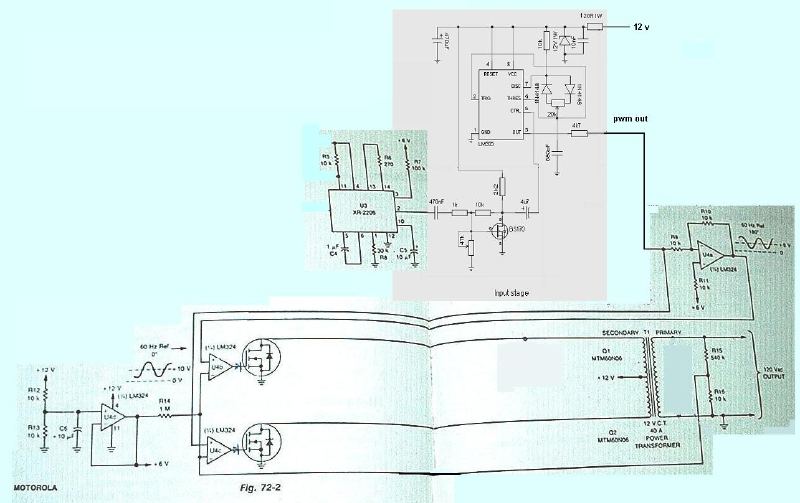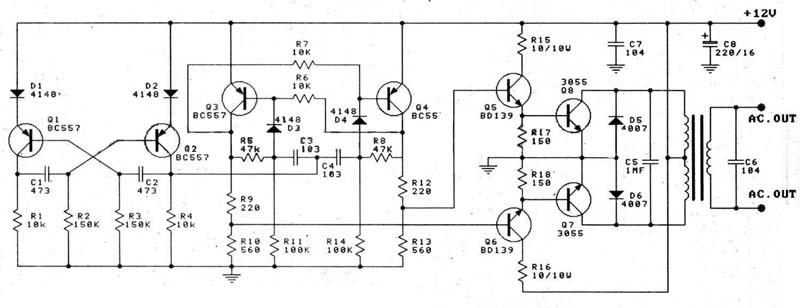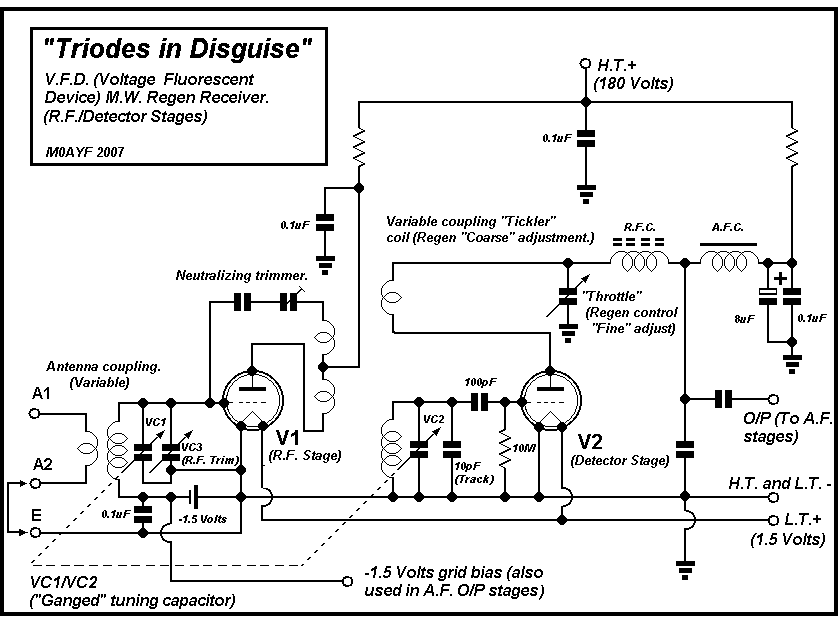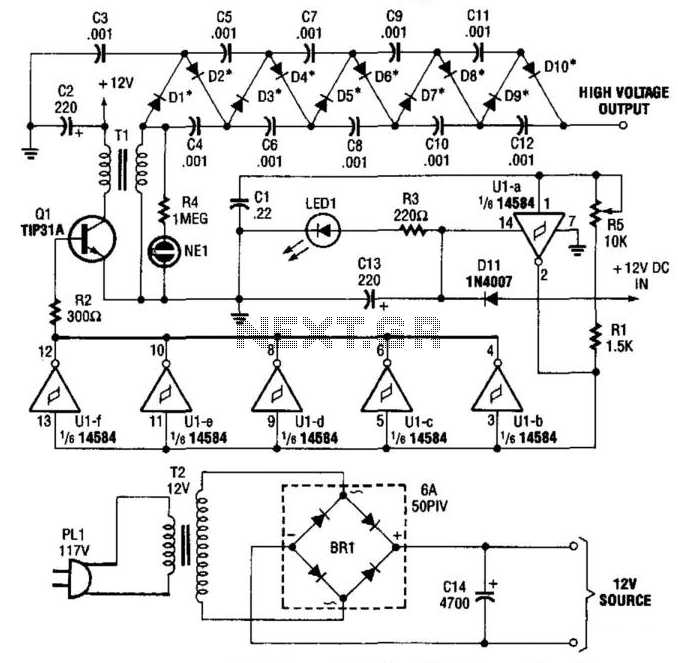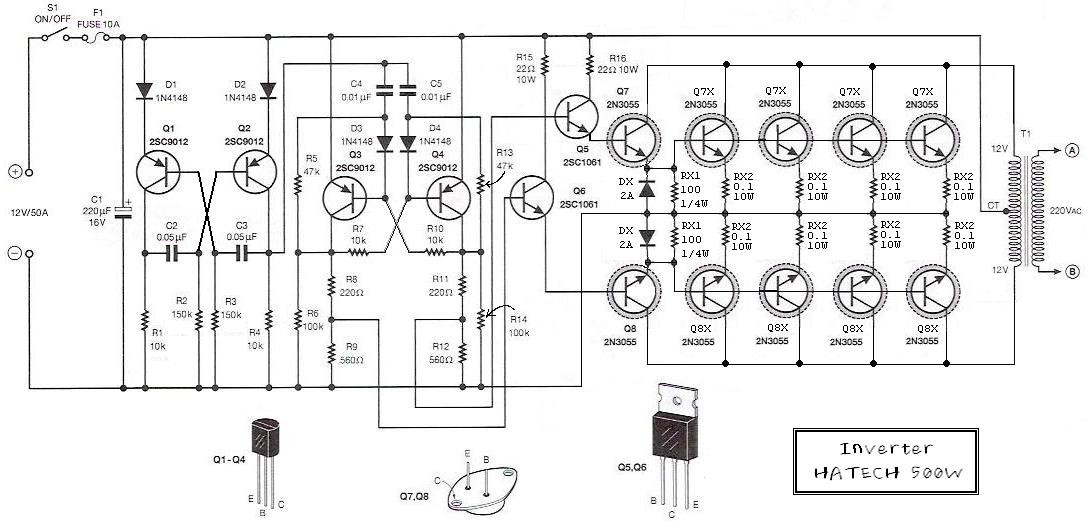
12 VDC to 120/220 VAC Inverter
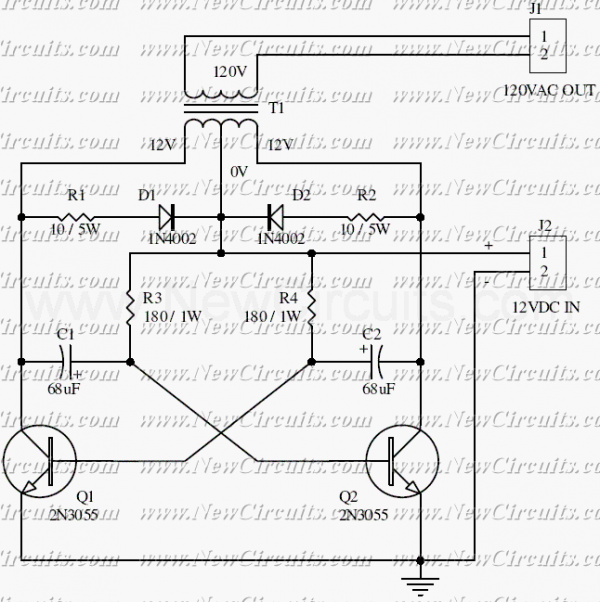
This inverter will sufficiently power any of your 115VAC (or 220VAC) small appliances. T1 choice of amperage is yours to make, but if you can salvage a heavy-duty unit from somewhere, use it. The least expensive method to get a larger transformer would be to remove the old 2000v primary and then re-wind an old microwave transformer. Most of these transformers are rated 1KW or better. Your local TV or Electronics repair shop may have one or dig one up from the dumpster. If you live in Europe, Australia, or any other country with a 220VAC system, the only difference is the transformer. This particular circuit can be constructed to handle up to 1 KiloWatt (1000 watt). If there is enough interest, it is possible to modify the circuit further.
The inverter circuit described is designed to convert DC voltage into AC voltage, enabling the use of standard household appliances that operate on 115VAC or 220VAC. The key component of this inverter is the transformer, denoted as T1, which plays a crucial role in stepping up the voltage to the required level. The choice of transformer amperage is flexible, allowing users to select a unit that meets their specific power requirements. A heavy-duty transformer is recommended for optimal performance, especially for applications demanding higher current.
For those looking to construct a larger inverter, repurposing a microwave transformer is suggested. These transformers typically have a high power rating, often exceeding 1KW, making them suitable for this application. The process involves removing the existing primary winding, which is rated for 2000 volts, and rewinding it to suit the desired specifications. This method is cost-effective and allows for the customization of the inverter's power output.
For regions utilizing a 220VAC system, such as Europe and Australia, the primary modification needed is the transformer. The circuit can be adapted to accommodate this voltage level, ensuring compatibility with local electrical standards. The overall design aims to provide a reliable power solution for small appliances, with the capability of handling loads up to 1KW. Further modifications can be explored based on user interest, potentially enhancing the inverter's functionality and efficiency.This inverter will sufficiently power any of your 115VAC (or 220VAC)small appliances. T1 choice of amperage is yours to make, but if you can salvage a heavy-duty unit from somewhere, use it. The least expensive method to get a larger transformer would be to remove the old 2000v primary and then re-wind an old microwave transformer.
Most of these transformers are rated 1KW or better. Your local TV or Electronics repair shop may have one or dig one up from the dumpster. If you live in Europe, Australia, or any other country with a 220VAC system, the only different is the transformer. This particular circuit can be constructed to handle up to 1 KiloWatt (1000 watt). If there is enough interest, it is possible to modify th 🔗 External reference
The inverter circuit described is designed to convert DC voltage into AC voltage, enabling the use of standard household appliances that operate on 115VAC or 220VAC. The key component of this inverter is the transformer, denoted as T1, which plays a crucial role in stepping up the voltage to the required level. The choice of transformer amperage is flexible, allowing users to select a unit that meets their specific power requirements. A heavy-duty transformer is recommended for optimal performance, especially for applications demanding higher current.
For those looking to construct a larger inverter, repurposing a microwave transformer is suggested. These transformers typically have a high power rating, often exceeding 1KW, making them suitable for this application. The process involves removing the existing primary winding, which is rated for 2000 volts, and rewinding it to suit the desired specifications. This method is cost-effective and allows for the customization of the inverter's power output.
For regions utilizing a 220VAC system, such as Europe and Australia, the primary modification needed is the transformer. The circuit can be adapted to accommodate this voltage level, ensuring compatibility with local electrical standards. The overall design aims to provide a reliable power solution for small appliances, with the capability of handling loads up to 1KW. Further modifications can be explored based on user interest, potentially enhancing the inverter's functionality and efficiency.This inverter will sufficiently power any of your 115VAC (or 220VAC)small appliances. T1 choice of amperage is yours to make, but if you can salvage a heavy-duty unit from somewhere, use it. The least expensive method to get a larger transformer would be to remove the old 2000v primary and then re-wind an old microwave transformer.
Most of these transformers are rated 1KW or better. Your local TV or Electronics repair shop may have one or dig one up from the dumpster. If you live in Europe, Australia, or any other country with a 220VAC system, the only different is the transformer. This particular circuit can be constructed to handle up to 1 KiloWatt (1000 watt). If there is enough interest, it is possible to modify th 🔗 External reference
